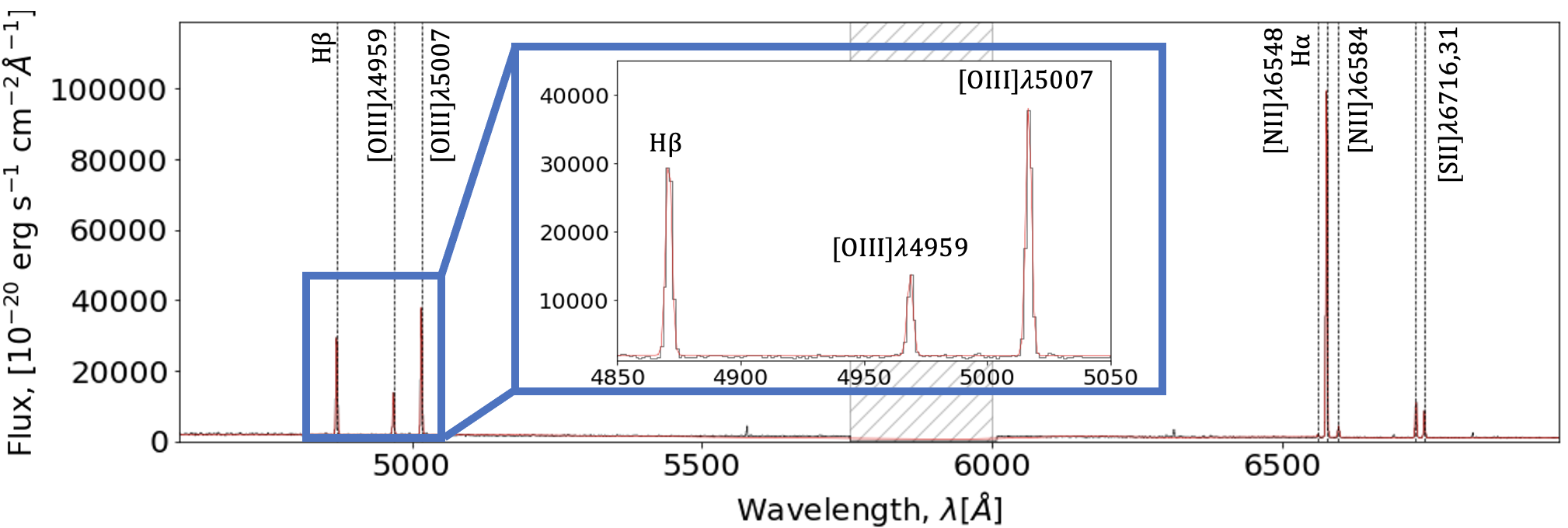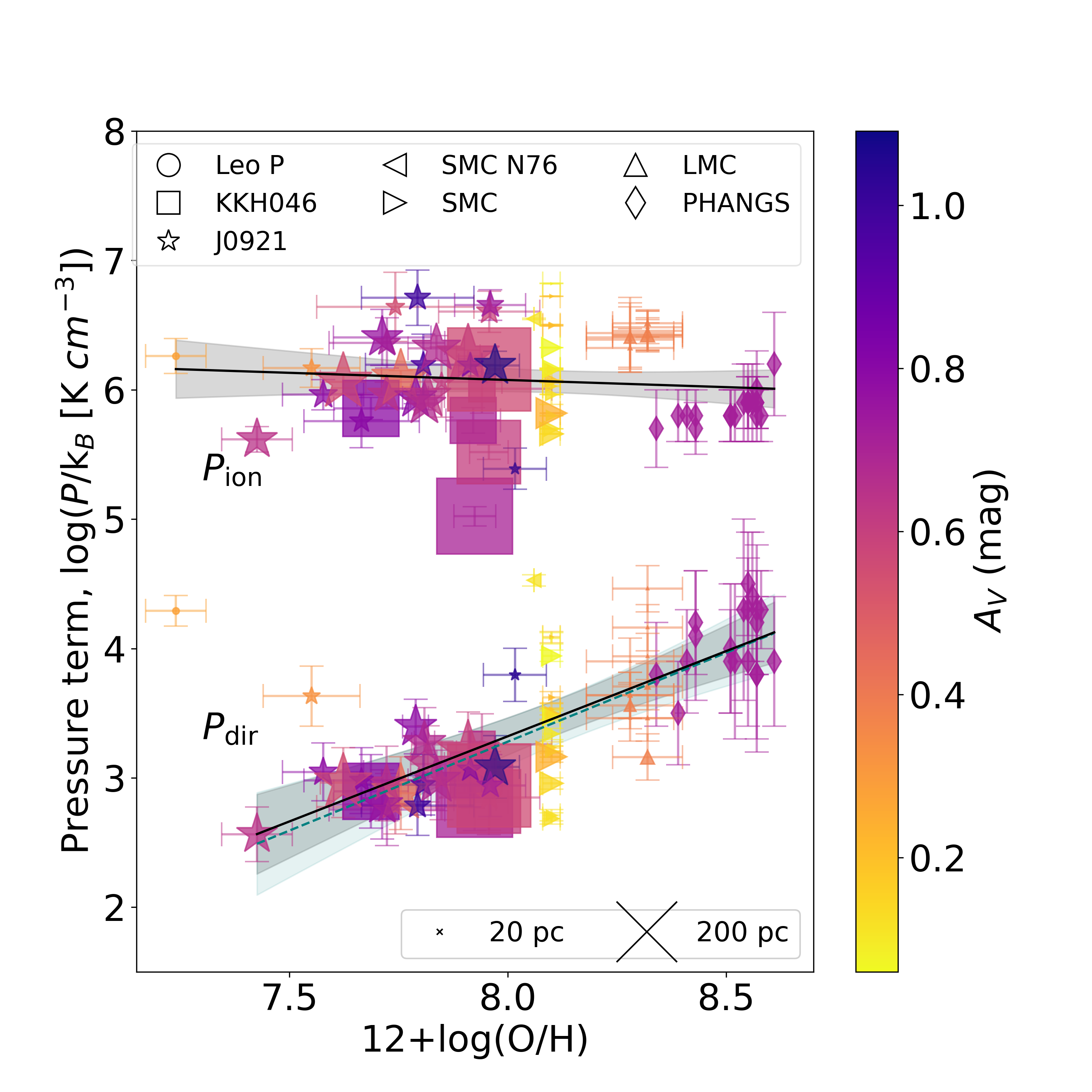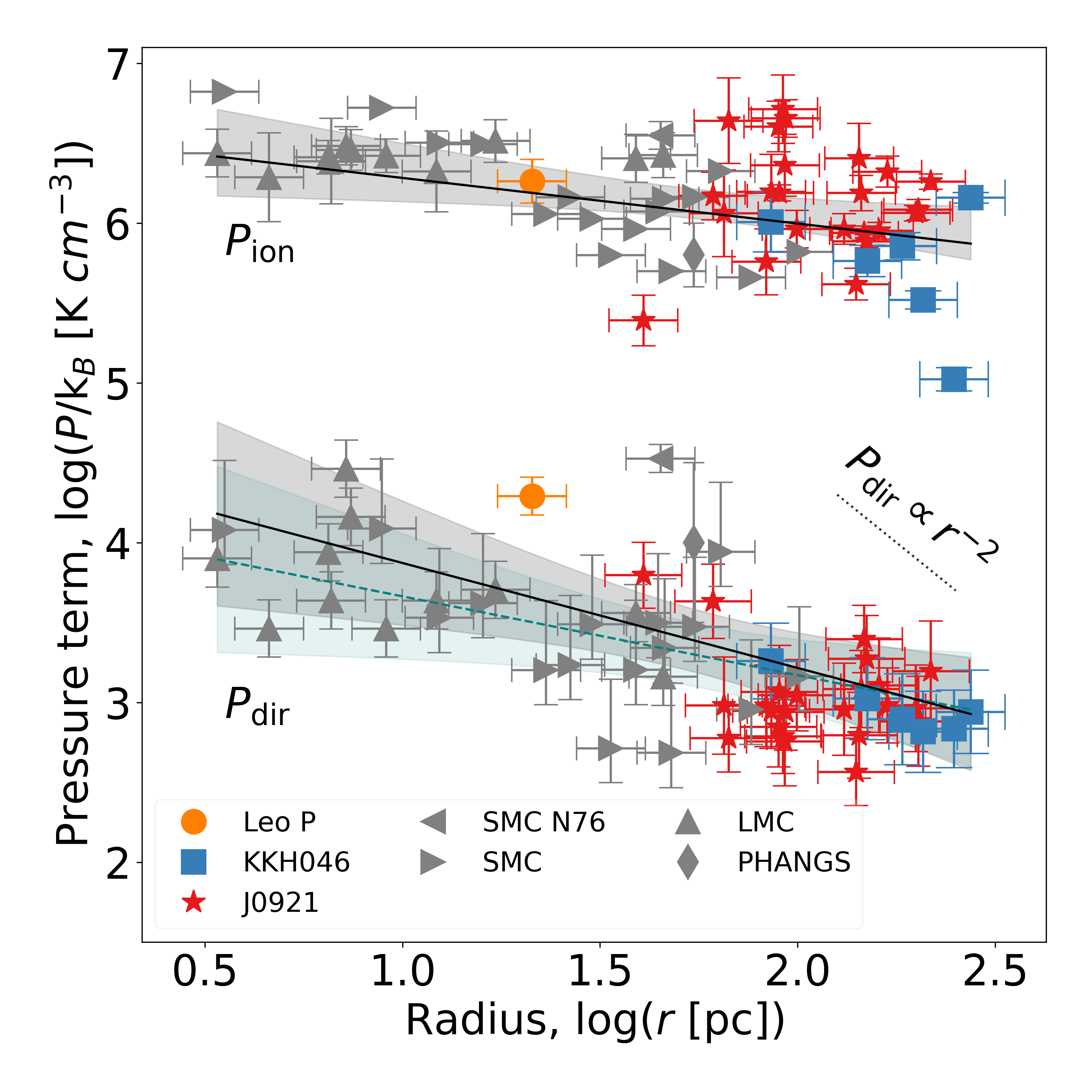Stellar Feedback in Nearby Dwarf Galaxies
Published in A&A
One field of research that I am particularly interested in is the study of nearby, low metallicity dwarf galaxies. These galaxies provide a unique opportunity to study how stars shape their environments in extreme conditions, similar to those of the early Universe.
In this work, we investigate the impact of stellar feedback in three dwarf starburst galaxies — J0921, KKH046, and Leo P. Using VLT/MUSE integral field spectroscopy, we examine the properties of 30 individual HII regions within these galaxies, focusing on their ionised gas and stellar populations. We quantify two pre-supernova stellar feedback mechanisms, namely the direct radiation pressure and photoionisation feedback, and explore how feedback strength varies with HII region properties.
Our findings suggest that stellar feedback decreases as regions evolve, with feedback strength also influenced by the metallicity of the regions. This work extends feedback studies from massive galaxies to low-mass dwarfs, providing insights into how these small systems regulate star formation and evolve over time, offering a glimpse into the processes that shaped galaxies in the early universe.




References
2024
- Pre-supernova stellar feedback in nearby starburst dwarf galaxies\aap, May 2024